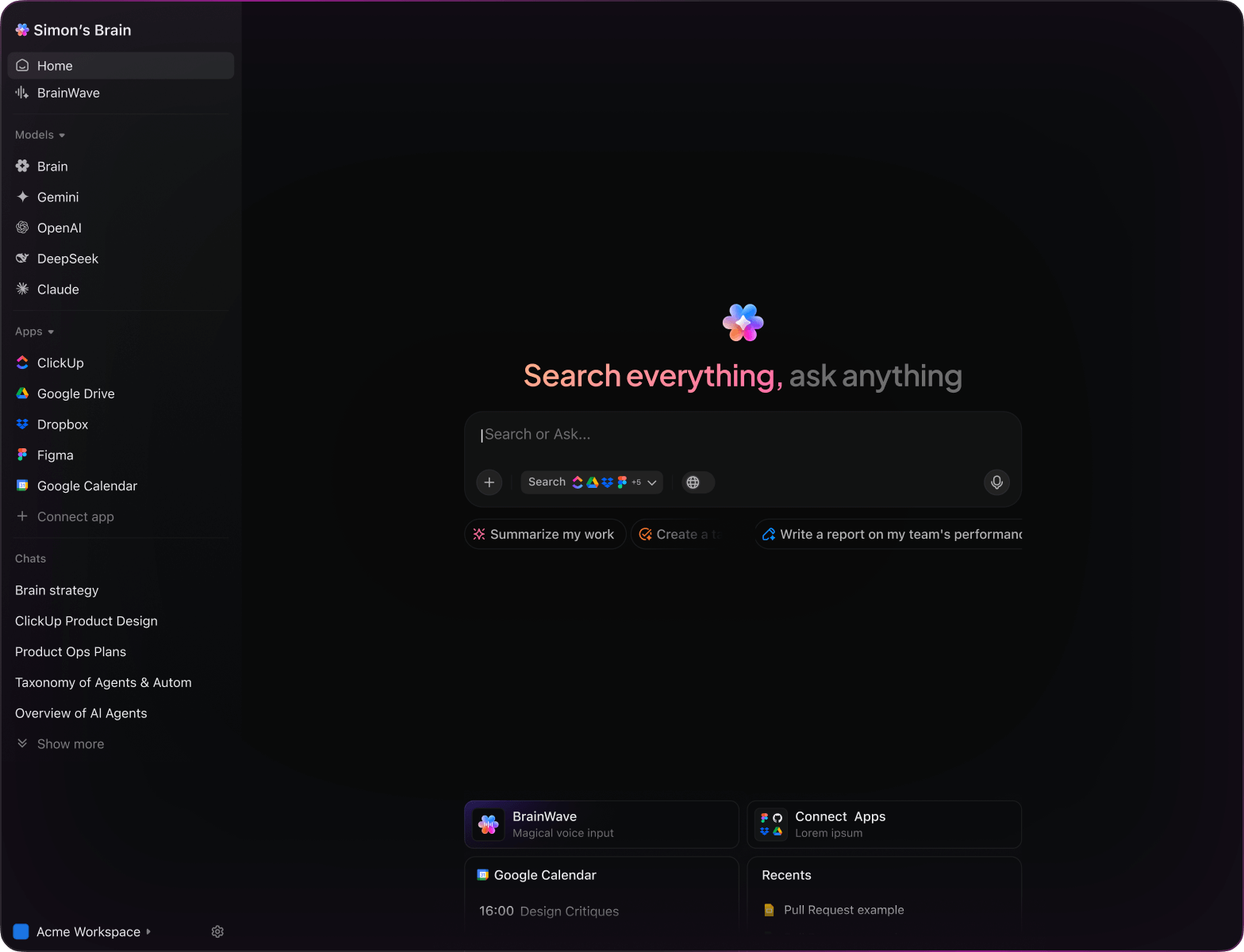AI Data Science Insights
Top AI Prompts for Data Science Teams
Unlock deeper analysis, automate data tasks, and elevate your data projects with ClickUp Brain's AI-powered prompts.
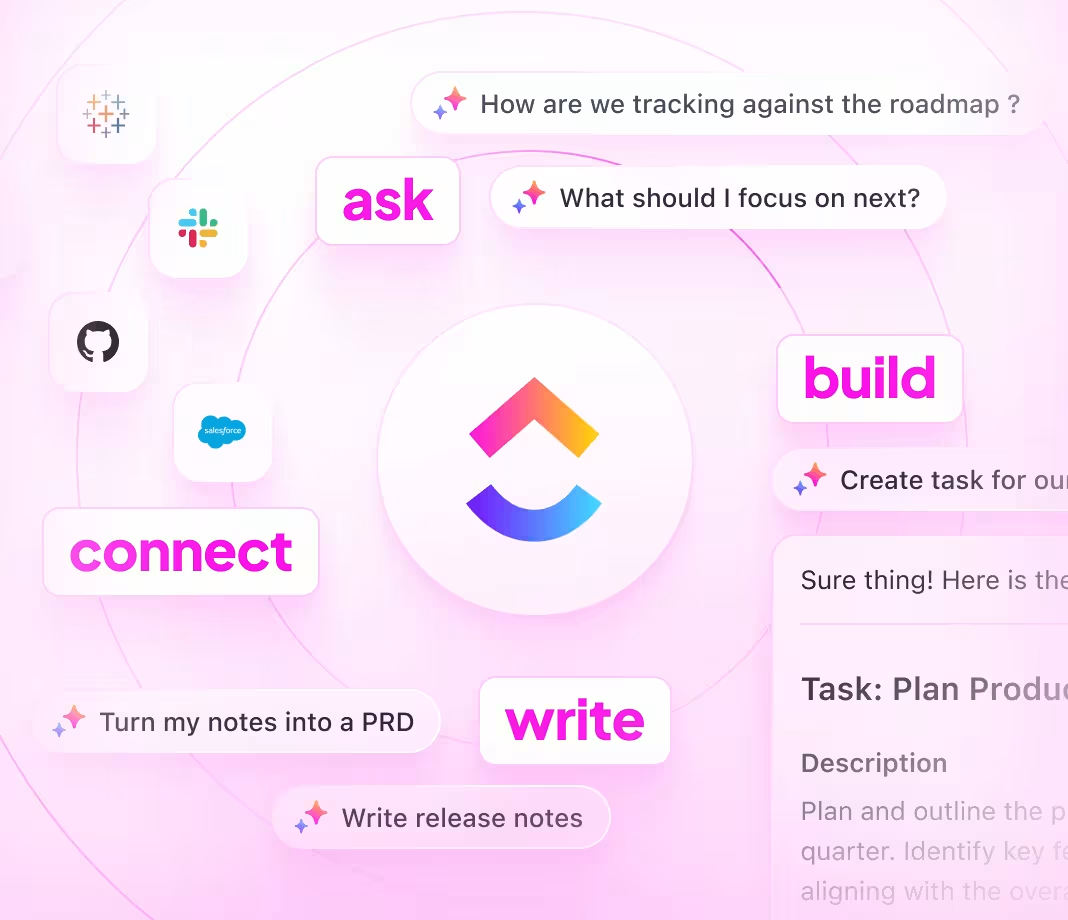
Trusted by the world’s leading businesses
AI Empowering Data Science
Revolutionizing Data Science with AI Prompts in ClickUp Brain
Data science projects are complex journeys—from gathering raw data to delivering actionable insights.
Handling datasets, building models, validating results, and communicating findings require juggling numerous files, tasks, and timelines. AI prompts are now a vital part of this process.
Data teams leverage AI to:
- Quickly identify relevant datasets and research papers
- Generate code snippets, model summaries, and experiment plans with ease
- Extract key points from lengthy reports and documentation
- Transform scattered notes into clear project outlines, checklists, or task lists
Integrated into daily tools like documents, dashboards, and project boards, AI in ClickUp Brain goes beyond assistance. It actively organizes your data science workflow, turning ideas into structured, manageable actions.
ClickUp Brain vs Conventional Solutions
Why ClickUp Brain Stands Out
ClickUp Brain integrates seamlessly, understands your data science context, and acts swiftly—so you focus on insights, not setup.
Standard AI Platforms
- Constantly toggling between apps to collect project details
- Reiterating your analysis objectives with every query
- Receiving generic, irrelevant suggestions
- Hunting through multiple platforms to locate datasets
- Interacting with AI that only responds passively
- Manually switching among various AI engines
- Merely a browser add-on without deep integration
ClickUp Brain
- Deeply connected to your data projects, notes, and team progress
- Retains your previous analyses and objectives
- Provides insightful, context-driven recommendations
- Searches all your resources in one place
- Supports voice commands with Talk to Text
- Automatically selects optimal AI models: GPT, Claude, Gemini
- Dedicated Mac & Windows app designed for efficiency
AI Prompts for Data Science
15 Essential AI Prompts for Data Science Teams
Accelerate data analysis, model building, and insights discovery with tailored AI support.

List 5 advanced data cleaning and transformation techniques tailored for churn prediction datasets, referencing the ‘Customer Churn 2024’ report.
ClickUp Brain Behavior: Extracts key preprocessing strategies and patterns from linked documents to recommend effective approaches.

What feature creation methods are currently favored in retail demand prediction models? Analyze internal research and external publications.
ClickUp Brain Behavior: Combines insights from proprietary studies and public datasets to highlight impactful feature engineering trends.

Using notes from ‘Time Series Modeling Guidelines’ and recent project retrospectives, create a structured evaluation plan.
ClickUp Brain Behavior: Gathers relevant criteria and best practices from linked files to produce a comprehensive assessment checklist.

Compare algorithm effectiveness using metrics and findings from the ‘Credit Risk Models Q1’ document.
ClickUp Brain Behavior: Extracts quantitative results and qualitative observations to deliver a clear comparative summary.

Compile a list of leading visualization platforms and libraries, referencing survey data and internal tool usage reports.
ClickUp Brain Behavior: Scans documents to identify frequently mentioned tools and their key advantages.

From the ‘Data Quality Assurance’ manual, create a step-by-step validation checklist suitable for automated workflows.
ClickUp Brain Behavior: Extracts validation rules and procedures, formatting them into actionable tasks or documentation.

Identify recent advancements and common techniques from post-2023 research papers and internal project notes.
ClickUp Brain Behavior: Detects recurring themes and innovative approaches within linked resources.

Analyze survey results from the ‘Data Science Tools Survey 2024’ to highlight favored features and pain points.
ClickUp Brain Behavior: Synthesizes user feedback to reveal patterns in collaboration tool usage and desired improvements.

Using the style guide in ‘ContentTone.pdf,’ craft clear and approachable tooltip text for end users.
ClickUp Brain Behavior: Adapts tone and terminology from the guide to generate multiple copy options.

Review linked compliance documents and public updates to outline key impacts on data science workflows.
ClickUp Brain Behavior: Condenses complex regulatory information into digestible summaries for team awareness.

Reference internal protocols and external standards to produce clear instructions for data annotation teams.
ClickUp Brain Behavior: Extracts relevant rules and formats them into a practical guideline checklist.

Utilize ‘Model Deployment Risk’ reports and best practice documents to build a comprehensive evaluation list.
ClickUp Brain Behavior: Identifies critical risk factors and organizes them into actionable review items.

Summarize advantages and limitations of AWS, Azure, and Google Cloud based on internal analyses and vendor docs.
ClickUp Brain Behavior: Produces a clear, side-by-side comparison highlighting key scalability aspects.

Synthesize trends from recent conference papers, internal research, and industry reports.
ClickUp Brain Behavior: Detects and summarizes innovative approaches and tools shaping the field.

Extract and prioritize issues reported in feedback folders, focusing on latency, errors, and resource usage.
ClickUp Brain Behavior: Analyzes feedback to highlight critical pain points and suggest areas for improvement.
Accelerate Data Science with ClickUp Brain
Cut down on redundant tasks, unify your data team, and produce superior insights through AI-driven workflows.





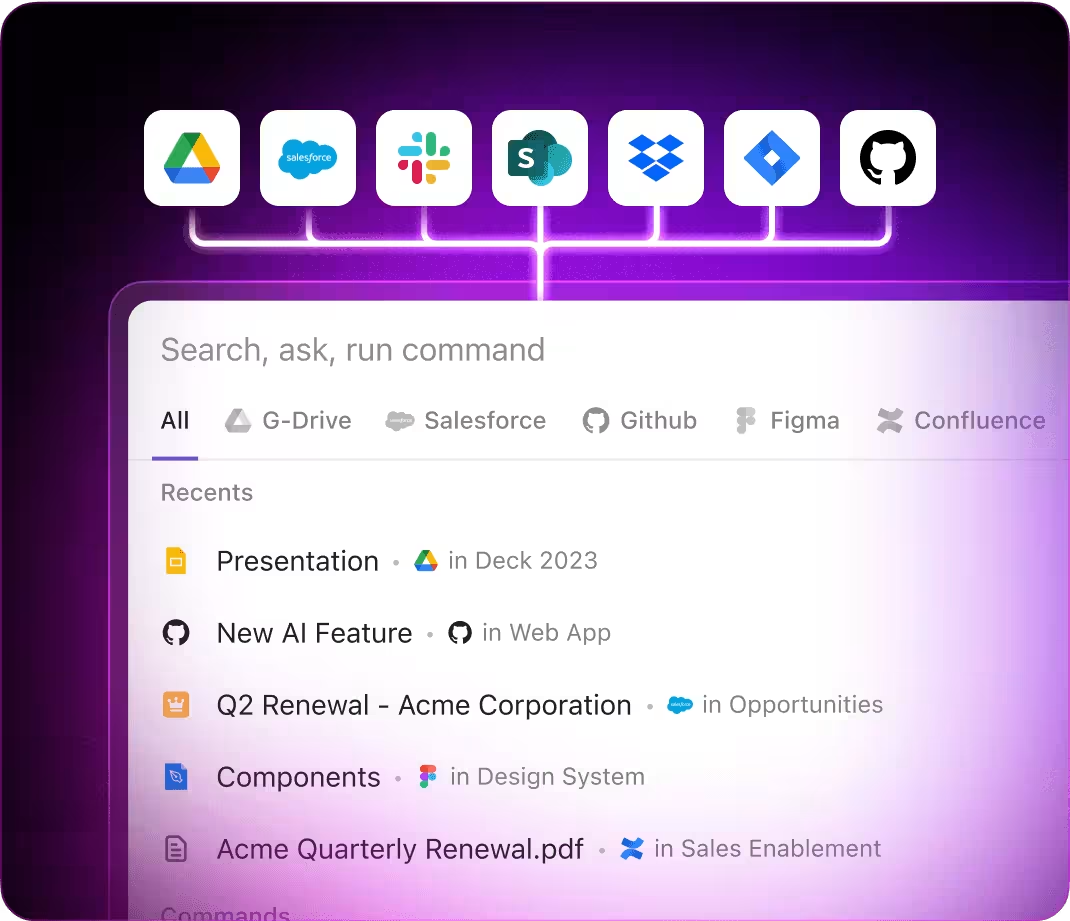
Data Science AI Prompts Powered by ClickUp Brain
Discover How ChatGPT, Gemini, Perplexity, and ClickUp Brain Enhance Data Science Workflows
ChatGPT Data Science Prompts
- Outline a 5-step summary of these data exploration notes focusing on key insights and anomalies.
- Compose an executive summary for a machine learning model report highlighting accuracy and limitations.
- Generate 3 alternative feature engineering strategies for a customer churn dataset and explain their expected impact.
- Draft a detailed workflow for deploying a predictive model into production with monitoring checkpoints.
- Compare the last 3 data preprocessing methods and summarize the most effective techniques for this project.
Gemini Data Science Prompts
- Propose 3 visualization concepts for a time series analysis dashboard based on stakeholder feedback.
- List innovative data augmentation techniques for image datasets focusing on model robustness.
- Describe a mood board for a data science project interface emphasizing clarity, interactivity, and color coding.
- Suggest optimal data sampling methods for imbalanced datasets and rank them by effectiveness.
- Create a comparison table for three classification algorithms focusing on precision, recall, and computational cost.
Perplexity Data Science Prompts
- List 5 scalable cloud platforms for big data processing and rank them by cost-effectiveness.
- Provide a comparison of popular deep learning frameworks highlighting ease of use, community support, and performance.
- Summarize recent trends in automated machine learning and their adoption in industry.
- Generate a list of 5 feature selection methods for high-dimensional data and rank by interpretability.
- Compare previous data science project outcomes and summarize top lessons learned for future initiatives.
ClickUp Brain Data Science Prompts
- Transform this data analysis discussion into prioritized tasks with clear owners and deadlines.
- Summarize sprint retrospective notes and create follow-up action items for the data engineering team.
- Review annotated model evaluation reports and generate a checklist for improvement areas.
- Compile tasks from this cross-functional meeting on data pipeline optimization, including urgency levels.
- Extract key points from user feedback on dashboard usability and create actionable design and development tasks in ClickUp.
Why Choose ClickUp
Transform Raw Data Into Clear Insights
- Convert scattered data points into structured analysis swiftly.
- Generate innovative hypotheses by tapping into historical datasets.
- Build standardized templates to accelerate recurring data projects.
Brain Max Boost: Effortlessly explore previous reports, datasets, and analysis notes to fuel your upcoming data models.
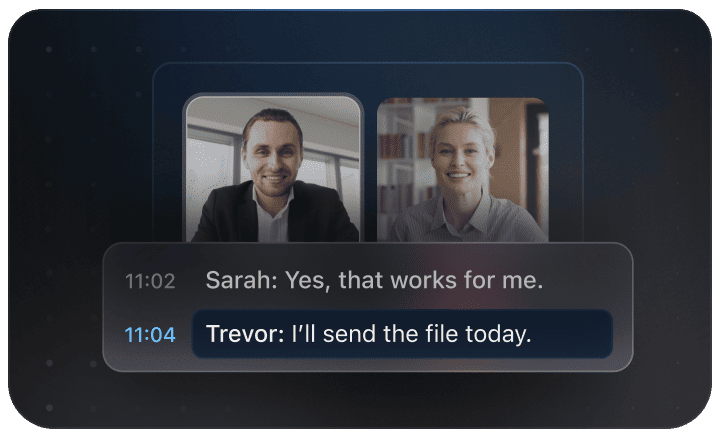
Why Choose ClickUp
Accelerate Data Science Project Delivery
- Break down intricate data challenges into manageable tasks.
- Transform analysis insights into actionable assignments.
- Automatically compile findings and progress summaries without extra effort.
Brain Max Boost: Instantly access historical model results, dataset versions, or experiment notes across your projects.
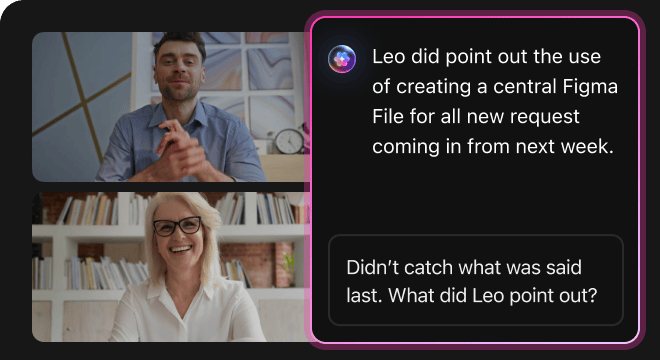
AI Advantages
How AI Prompts Elevate Every Phase of Data Science Projects
AI prompts accelerate analysis and inspire deeper, more accurate data insights.
Produce Insightful Models Quickly
Data scientists explore hypotheses rapidly, refine algorithms effectively, and bypass analysis bottlenecks.
Enhance Analytical Accuracy
Improve prediction quality, reduce errors, and deliver results stakeholders trust.
Identify Data Issues Early
Detect anomalies sooner, prevent costly rework, and maintain project timelines.
Align Teams Around Clear Objectives
Fosters communication, minimizes misunderstandings, and accelerates consensus among analysts, engineers, and decision-makers.
Drive Innovative Data Solutions
Encourages creative approaches, uncovers hidden patterns, and keeps your projects at the forefront.
Integrated AI Assistance Within ClickUp
Transforms AI-generated insights into actionable tasks that propel your data initiatives forward.
Boost Your Data Science Workflow
Minimize mistakes, enhance collaboration, and generate insightful results with AI-powered support.





